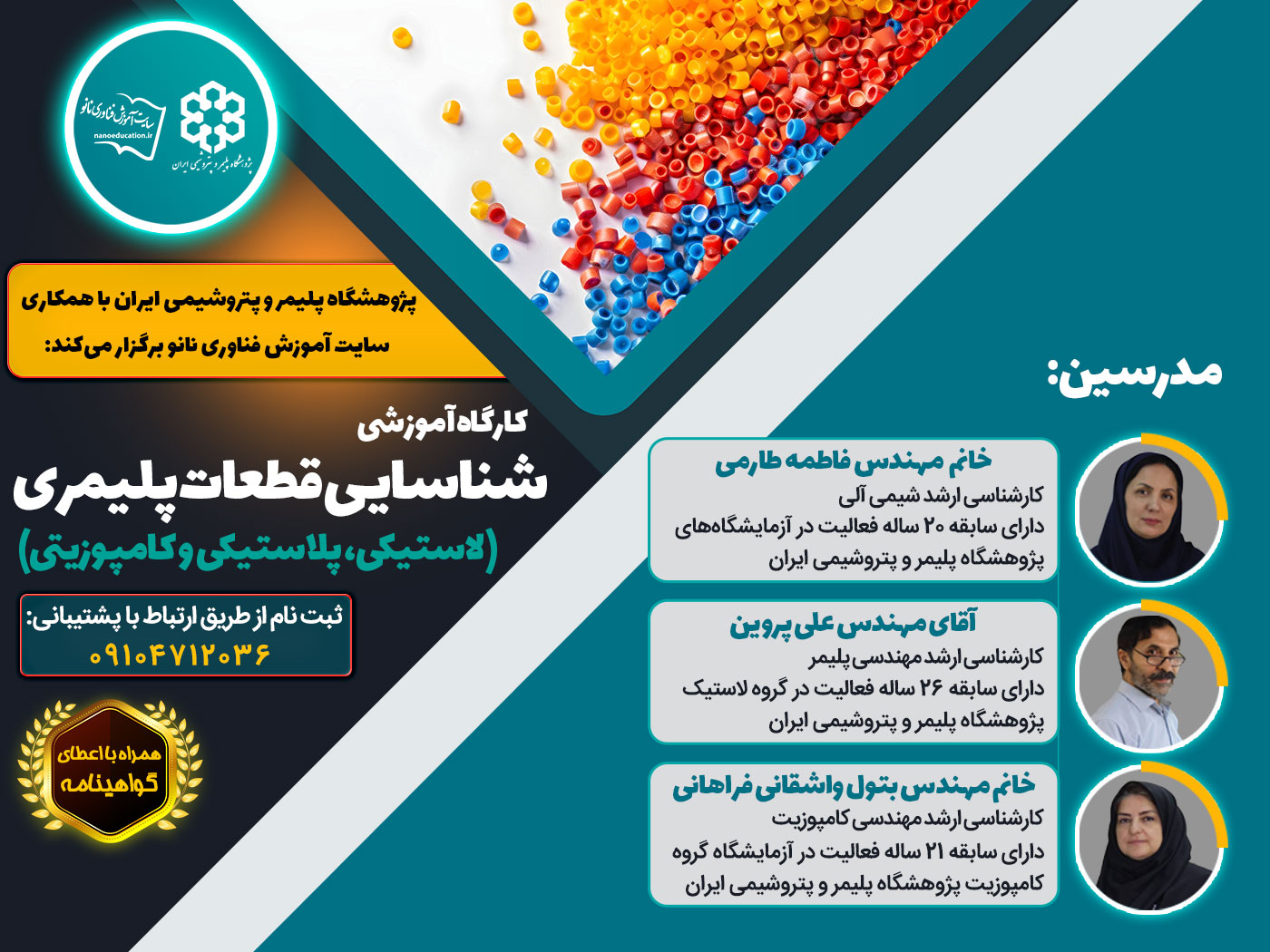اهمیت قانونگذاری در زمینه نانومواد
نانوذرات به مواد بسیار ریزی اطلاق میشوند که در فرایندهای مختلف طبیعی یا با فرایندهای نانوفناوری تهیه میشوند. ظهور این مواد، بیشتر صنایع از جمله داروسازی، الکترونیک، مواد غذایی، نساجی و سایر صنایع را تحت تأثیر خود قرار داده است. خواص منحصر به فرد نانوذرات در مقایسه با انواع ترکیبات درشت (macro) شیمیایی باعث ماندگاری و افزایش کارایی محصولات شده است. با تمام این مزایا، نانومواد گونههای ناشناختهای از مواد شیمیایی هستند که نمیتوان بدون شناسایی دقیق و مؤثر، آنها را بهطور گستردهای مورد بهرهبرداری قرار داد. مطالعات اخیر حاکی از بروز بیماریها و ناهنجاریهای جبرانناپذیری بر سلامت موجودات زنده است که تنها متأثر از این مواد بودهاند بنابراین در همین راستا برای حفاظت از سلامت انسانها، قوانین و مجریان قانون در سطوح ملّی و بینالمللی بسیار تأثیرگذار هستند. هدف این مقاله بررسی اهمیت واپایش (control) و قانونگذاری در حوزه نانوفناوری است.
این مقاله شامل سرفصلهای زیر است:
1- مقدمه
1-1- نانوذرات و خواص اختصاصی آنها
2-1- چه ویژگیهایی نانومواد را متفاوت میسازد؟
3-1- نانومواد در محیطهای زیستی چگونه عمل میکنند؟
4-1- نگرانیها در خصوص نانوذرات
5-1- قانونگذاری در زمینه نانومواد
2- بحث و نتیجهگیری

لطفا برای مشاهده متن کامل مقاله ابتدا وارد سایت شوید
منابـــع و مراجــــع
۱ - Nanomaterials [Internet], The United States National Institutes of Health, (2016), Available at https://www.niehs.nih.gov/health/topics/agents/sya-nano/.
۲ - Nanotechnology in Cancer Treatmen [Internet], (2016), Available At: http://www.understandingnano.com/cancer-treatment-nanotechnology.html
۳ - Use of nanotechnology in concrete [Internet], (2013), Available At: http://www.slideshare.net/ManikBhatija/use-of-nanotechnology-in-concrete
۴ - Nanotechnologythe environment - Potential benefitssustainability effects [Internet], (2012), Available at: http://www.nanowerk.com/spotlight/spotid=25910.php
۵ - What Makes Nanoparticles Different? [Internet], University of Bristol, School of Chemistry, (2002), [cited 2016], Available at: http://www.chm.bris.ac.uk/webprojects2002/etan/Webpages/theory.htm
۶ - How do nanomaterials behave in living organisms? [Internet], (2009), Available at: http://ec.europa.eu/health/scientific_committees/opinions_layman/nanomaterials/en/l-3/4.htm.
۷ - Manke A, Wang L, Rojanasakul Y, “Mechanisms of nanoparticle-induced oxidative stresstoxicity”, BioMed Research International, Vol.2013, p.1-16, (2013).
۸ - The Need for Stronger Nanotechnology Regulation [Internet], (2012), Available at: http://www.foodsafetynews.com/2012/10/why-we-should-have-more-regulations-on-nanotechnology/.V-T8oOTsJos
۹ - Hansen S.F, “RegulationRisk Assessment of Nanomaterials – Too Little, Too Late?”, PhD Thesis, Technical University of Denmark, (2009)
۱۰ - Navarro E, Baun A, Behra R, Hartmann N.B, Filser J, Miao A-J, et al, “Environmental behaviorecotoxicity of engineered nanoparticles to algae, plants,fungi”, Ecotoxicology, Vol.17, I.5, p.372-386, (2008).
۱۱ - Poynton H.C, Lazorchak J.M, Impellitteri C.A, Smith M.E, Rogers K, Patra M, et al. “Differential gene expression in Daphnia magna suggests distinct modes of actionbioavailability for ZnO nanoparticlesZn ions”, Environmental Science & Technology, Vol.45, I.2, p.762-768, (2011).
۱۲ - Neal A.L, Kabengi N, Grider A, Bertsch P.M, “Can the soil bacterium Cupriavidus necator sense ZnO nanomaterialsaqueous Zn2+ differentially?”, Nanotoxicology, Vol.6, I.4,p.371-380, (2012).
۱۳ - Bilberg K, Hovgaard M.B, Besenbacher F, Baatrup E, “In vivo toxicity of silver nanoparticlessilver ions in zebrafish (Danio rerio)”, Journal of Toxicology, Vol.2012, p.1-9, (2012).
۱۴ - Misra S.K, Dybowska A, Berhanu D, Luoma S.N, Valsami-Jones E, “The complexity of nanoparticle dissolutionits importance in nanotoxicological studies”, Science of the Total Environment, Vol.438, p.225-232, (2012).
۱۵ - George S, Xia T, Rallo R, Zhao Y, Ji Z, Lin S, et al, “Use of a high-throughput screening approachcoupled with in vivo zebrafish embryo screening to develop hazard ranking for engineered nanomaterials”, ACS Nano, Vol.5, I.3,p.1805-1817, (2011).
۱۶ - Zhang H, Ji Z, Xia T, Meng H, Low-Kam C, Liu R, et al, “Use of metal oxide nanoparticle band gap to develop a predictive paradigm for oxidative stressacute pulmonary inflammation”, ACS Nano, Vol.6, I.5,p.4349-4368, (2012).
۱۷ - Burello E, Worth A.P, “A theoretical framework for predicting the oxidative stress potential of oxide nanoparticles”, Nanotoxicology, Vol.5, I.2,p.228-235, (2011)
۱۸ - Federici G, Shaw B.J, Handy R.D, “Toxicity of titanium dioxide nanoparticles to rainbow trout (Oncorhynchus mykiss): gill injury, oxidative stress,other physiological effects”, Aquatic Toxicology, Vol.84, I.4, p.415-430, (2007).
۱۹ - Smith C.J, Shaw B.J, Handy R.D, “Toxicity of single walled carbon nanotubes to rainbow trout,(Oncorhynchus mykiss): respiratory toxicity, organ pathologies,other physiological effects”, Aquatic toxicology, Vol.82, I.2, p.94-109, (2007).
۲۰ - Ramsden C.S, Smith T.J, Shaw B.J, Handy R.D, “Dietary exposure to titanium dioxide nanoparticles in rainbow trout,(Oncorhynchus mykiss): no effect on growth, but subtle biochemical disturbances in the brain”, Ecotoxicology, Vol.18, I.7, p.939-951, (2009).
۲۱ - Franklin N.M, Rogers N.J, Apte S.C, Batley G.E, Gadd G.E, Casey P.S, “Comparative toxicity of nanoparticulate ZnO, bulk ZnO,ZnCl2 to a freshwater microalga (Pseudokirchneriella subcapitata): the importance of particle solubility”, Environmental Science & Technology, Vol.41, I.24, p.8484-8490, (2007).
۲۲ - Jiang W, Mashayekhi H, Xing B, “Bacterial toxicity comparison between nano-and micro-scaled oxide particles”, Environmental Pollution, Vol.157, I.5, p.1619-1625, (2009).
۲۳ - Ma H, Brennan A, Diamond S.A, “Phototoxicity of TiO2 nanoparticles under solar radiation to two aquatic species: Daphnia magnaJapanese medaka”, Environmental ToxicologyChemistry, Vol.31, I.7,p.1621-1629, (2012).
۲۴ - Miller R.J, Bennett S, Keller A.A, Pease S, Lenihan H.S, “TiO2 nanoparticles are phototoxic to marine phytoplankton”, PloS ONE, Vol.7, I.1, p.e30321.
۲۵ - Schwirn K, Tietjen L, Beer I, “Why are nanomaterials differenthow can they be appropriately regulated under REACH?”, Environmental Sciences Europe, Vol.26, I.1, p.1-9, (2014).
۲۶ - Kühnel D, Nickel C, “The OECD expert meeting on ecotoxicologyenvironmental fate—towards the development of improved OECD guidelines for the testing of nanomaterials”, Science of The Total Environment, Vol.472, p.347-353, (2014).
۲۷ - Arvidsson R, Molander S, Sandén B.A, Hassellöv M, “Challenges in exposure modeling of nanoparticles in aquatic environments”, HumanEcological Risk Assessment: An International Journal, Vol.17, I.1, p.245-262, (2011).
۲۸ - Hansen S.F, Baun A, Tiede K, Gottschalk F, Meent Dvd, Peijnenburg W, et al, “Consensus Report based on the NanoImpactNet workshop: Environmental fatebehaviour of nanoparticles-beyond listing of ations”, NanoImpactNet, (2011), available at: http://orbit.dtu.dk/files/6236170/CD5F9d01.pdf








